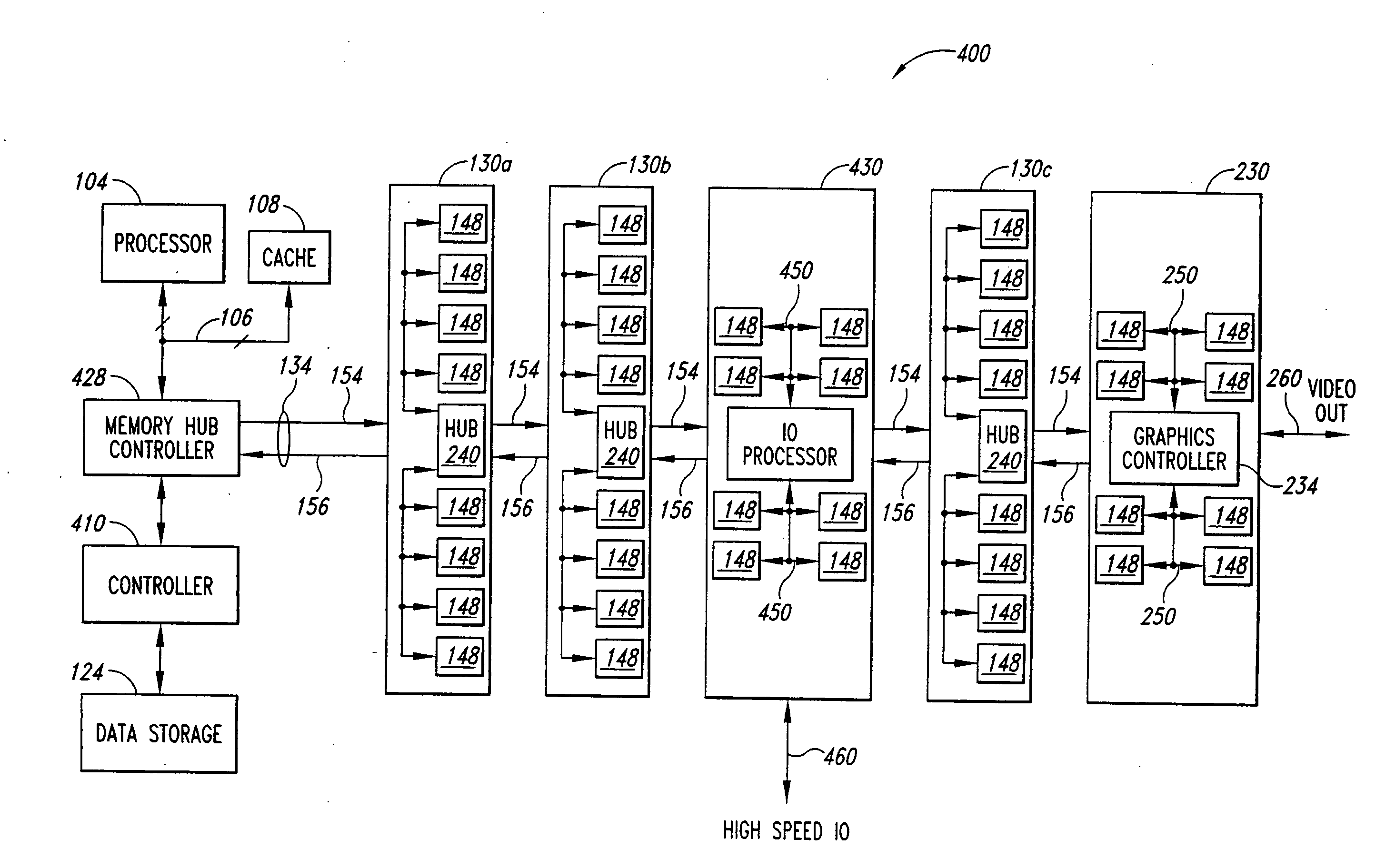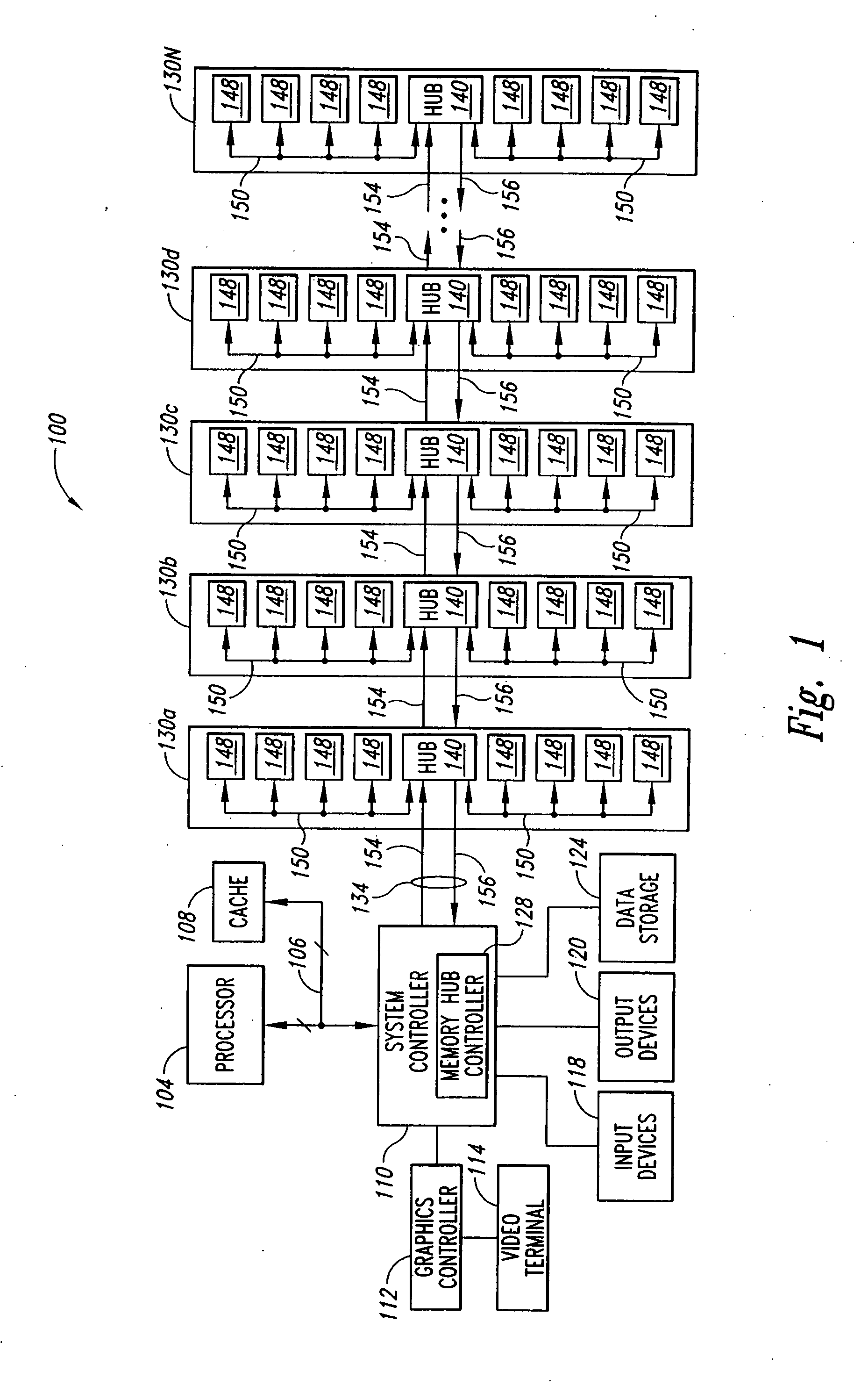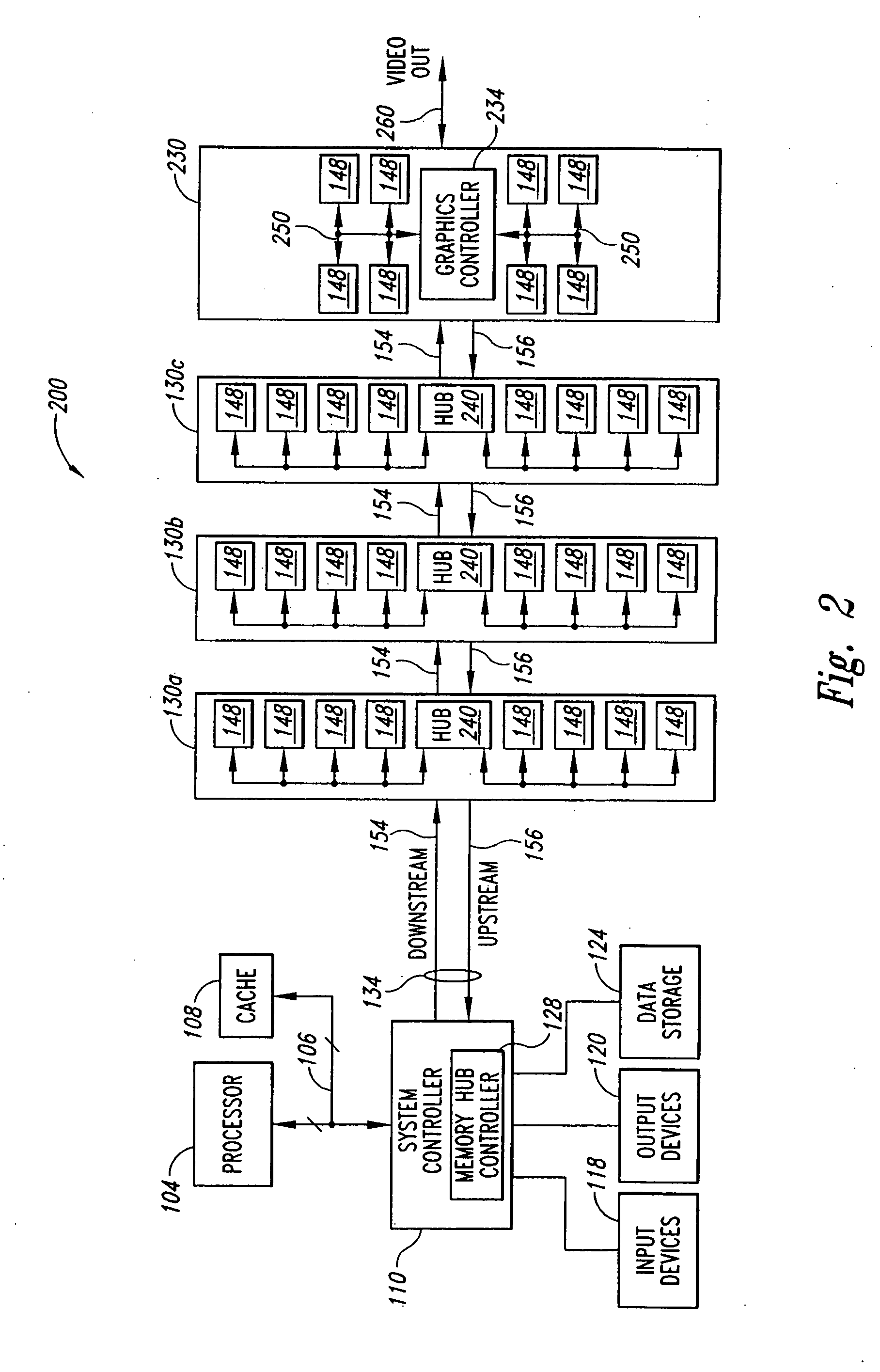System and method for memory hub-based expansion bus
a memory hub and expansion bus technology, applied in the field of memory system for processor-based computing systems, can solve the problems of reducing the hardware limitation of the memory device itself, affecting the performance of the memory device, and not related to the bandwidth limitation, etc., and reducing the hardware limitation adds cost, power, and/or size to the memory
- Summary
- Abstract
- Description
- Claims
- Application Information
AI Technical Summary
Benefits of technology
Problems solved by technology
Method used
Image
Examples
Embodiment Construction
[0016]FIG. 2 illustrates a processor based computing system 200 according to an embodiment of the present invention. The system 200 includes many of the same functional blocks as previously described with reference to FIG. 1. As such, the same reference numbers will be used in FIG. 2 as in FIG. 1 to refer to the same functional blocks where appropriate. The system 200 includes a processor 104 coupled to a system controller 110 through a processor bus 106. As in FIG. 1, the processor performs various computing functions, for example, executing software to perform specific calculations or tasks, and the processor bus 106 typically includes an address bus, a control bus, and a data bus. A cache memory 108 is also coupled to the processor bus 106 to provide the processor 104 with temporary storage of frequently used data and instructions. As previously discussed with respect to FIG. 1, the system controller 110 serves as a communications path to the processor 104 for a variety of other ...
PUM
 Login to View More
Login to View More Abstract
Description
Claims
Application Information
 Login to View More
Login to View More - R&D
- Intellectual Property
- Life Sciences
- Materials
- Tech Scout
- Unparalleled Data Quality
- Higher Quality Content
- 60% Fewer Hallucinations
Browse by: Latest US Patents, China's latest patents, Technical Efficacy Thesaurus, Application Domain, Technology Topic, Popular Technical Reports.
© 2025 PatSnap. All rights reserved.Legal|Privacy policy|Modern Slavery Act Transparency Statement|Sitemap|About US| Contact US: help@patsnap.com



